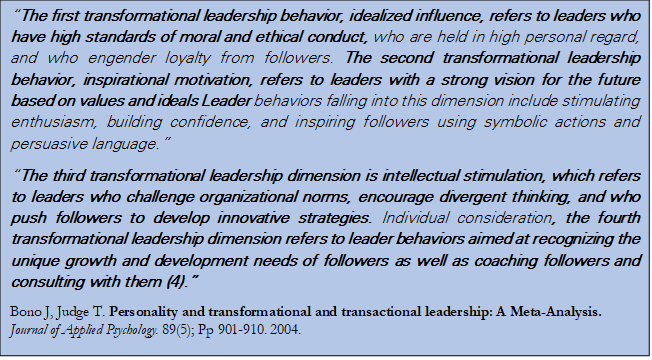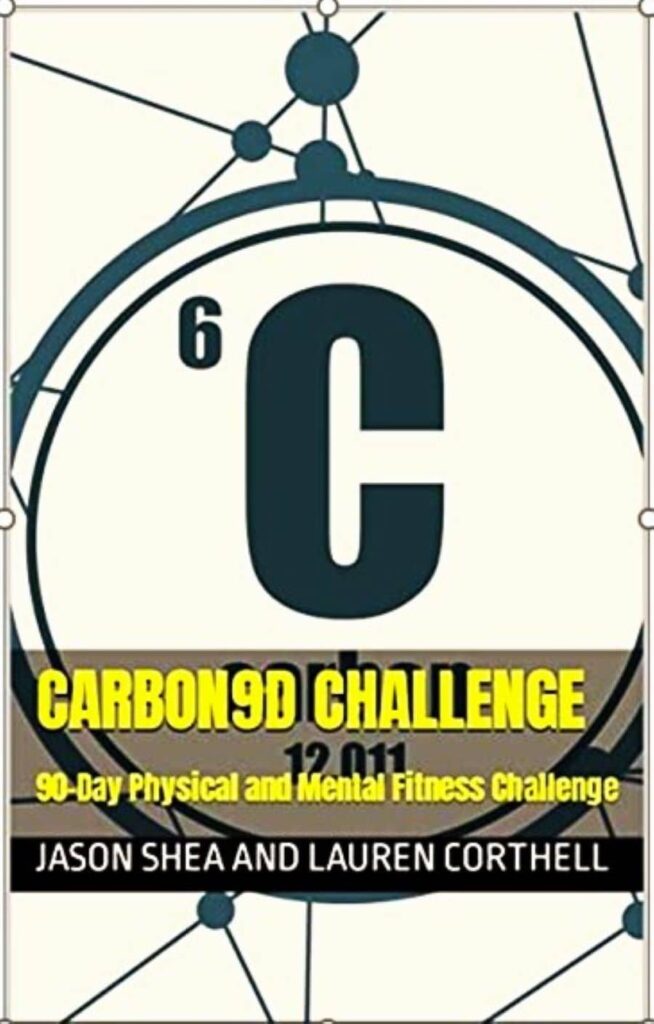H.E.A.R.T.
Have you ever wondered what it would be like to have a humble, respectful, team first business executive who ran a $5 Billion company, come in as a head coach or Athletic Director to turn a program around? How would this person do it? Would the experiences and strategies of running a global corporation transfer to a sports team? Or vice versa, do the values and experiences of playing team sports in youth, high school and college, impact leadership and work ethic in the corporate world?
In November of 2008, Cognos, a company with nearly 3,500 employees and over 25k customers worldwide, sold to IBM for $4.9 Billion. When Tony joined the company in 1993, they had a revenue of roughly $10 million. When they sold to IBM, they were at roughly $800 million. So, how did a kid who grew up in Winthrop Ma, playing baseball and hockey, and later baseball at St. Amsalem’s, end up running a multi-billion dollar global corporation?
How much focus to put on strategy vs execution
“In most companies, teams, environments, etc. there is so much debate about the strategy. For example, in sports, do we use a wide spread offense or up the middle; in hockey do we dump it in; in business, leaders spend a lot of time worrying about strategy. I believe you need to have your strategy right and fluid, but also must get your execution model correct.

If you have a great strategy and you execute poorly you are screwed. Poor strategy and execution you are screwed. If you have a poor strategy but execute great, you can do okay. If you have great execution and great strategy it, you will succeed. Execution has a greater impact than strategy on the potential result” expresses Tony.
HEART
That is the one word Tony used to describe the culture of Cognos. Humility, Enthusiasm, Ambition, Respect, and Trust.
“Humility is the understanding that success doesn’t happen because of you. You didn’t get there alone. When a football player does a touchdown dance, that is not humility. What humility is, is when you get a touchdown go over and thank everybody else that got you there. It is not just you, it is everybody.
Enthusiasm. Name me one negative leader that you follow? Whereas positive people are so infectious. Remain positive. No negative water cooler talk. Don’t allow that to occur in your organization.
Ambition. It is not winning, it is being as good as you can be. Some day you are going to run into Michael Jordan on the basketball court, but that is no excuse not to be as good as you can be.
Respect. Having respect for yourself, teammates, coaches, fans, opponents. Everything around you.
Trust. You need to trust others and others need to be able to trust you.”
Candor and Openness
“We used to talk for hours about that. We would talk about our organization and culture. We would grade ourselves. Are we open and candid with each other?
I want you to rate yourself in how open you are to suggestions and criticisms from others. Then ask everyone else to rate you. Then, how candid are you toward them? Ask to rate yourself and then have others rate you. This comes down to trust. They don’t trust you enough to be candid with you.
Deliver good news in public, bad news in private. When I did this my people felt I was not holding people on my team accountable because I did not do it in public. So, I had to adjust to this. I started being candid with them in public as this is what they wanted” shares Tony.
Execution
“We had our coaching staff. Three of us, the CEO, CTO, and COO. We needed to be open and candid with each other. Then had same conversation with the captains. We had the same thing when I was coaching baseball. The captains were hesitant to talk to me at first. They said the pitchers feel you are overworking them. They are tired. I looked at them and said thank you. From that point on they knew I was open to their input. The level of conversation and openness was great from that moment on.
In the movie Miracle, when they were doing all those Herbies after the game in Europe, Mike Eruzione finally gets up and says, “I am playing for the USA”. Why couldn’t he just tell them that? Brooks felt they had to learn it. They, and he, did not feel there could be an effective conversation with each other until they, as a team, learned this.
If you think about strategy and execution, strategy is the bullseye. This is the target. Execution is the arrow. I learned this from somewhere. The tip of the arrow when you are a small company is your people. And behind that is the processes, and then the product in the back. As a corporation gets bigger and the individuals becomes less important, the process then becomes the tip, the people second and the product third.

One of the most important parts about execution is to get all the wood behind the arrow aligned. In so many companies these are not aligned properly with strategy. Everything has to be going in the same direction. From my experience the successful teams are never fully aligned, but much more aligned than the less successful ones.
If you have a home run hitting slugger that joins a small ball team, they hit home runs all the time, but strikeout too much. They are not aligned. Take for example Derrell Revis and the New England Patriots. As soon as he left the Patriots, Bill Belichick changed their strategy as from man to man, and they then no longer needed Brandon Browner.
In our company we had 3 major groups; the product group, the marketing group, and the sales group. Each of these groups looked at opportunities through different lenses. If you focus on what is 18 months out only, then 90 days out becomes blurry. People tend to have a perspective that is tied to their value add.

Our development organization was able to develop products at 15-18 month windows. This is the lens they looked at. 90 days meant nothing to them. The marketing campaigns would develop leads over 9 month lenses.
The sales organization had a 90 day sales cycle. The sales people look at everything through a 90 cycle. They could not understand why when they need something in 90 days, the development organization could not deliver and vice versa.
Getting a person aligned behind the same arrow with 3 different perspectives is incredibly challenging. Take for example the 85 Chicago bears. Buddy Ryan was the defensive genius. Attack, attack, attack. Ditka was a conservative offensive guy. They always argued. But they were both after the same goal. Two leaders with two different perspectives that needed to be aligned.
During my time, we fired the top sales guy in the organization. He got up and gave a speech at a kickoff. He had just won the world wide rep to the year award. In his speech he talked about how great he was and how everybody needed to pick up the pace around him.
I ended up firing him because he could not fit into the culture we were trying to build. The important message we were trying to send to our team was heart, and we did not want individuals that did not represent that team culture.
The real lesson is the message I was delivering to the rest of the organization about the culture that was going to exist in the company. I had lots of people come up to me and say good job. They understood that I had their backs.
Transformational Leadership

Within people there is culture. The lesson for me was that to walk in the front door, the requirement was you had to be hard working and smart. Everybody in this world thinks they are hard-working and smart. You can tell within the first few minutes if a person is really hard working or not. Some people think if they put in a hard 38 hours, that that is hard working. A leader can snuff out who truly are the hard working, focused, go getters. To walk in the front door, people who aren’t hard working, did not fit in.
You have to be smart. In the sports world, I would replace smart with talent. You have to have some level of talent to play high school. There is a lot of talent that shows up at a college football camp, but the hard work and other characteristics bring them beyond.
It is these other things that bring people and teams to that next level. When you talk about people as a whole, you need hard work, intelligence, and a culture of HEART” shares Tony.
What is more important culture or strategy?
According to Tony “I could succeed with great execution (culture) even with poor strategy. It is not just culture and people, it is also the processes. People, processes and products. Every one of these great coaches has a process in which they run practices, recruiting, off-season prep, etc.”
Overcoming adversity
Tony recalls “When I got there, there were two businesses. I am only going to talk about the growth business. The business intelligence part was 10 million in revenue in 93. When I left, we were 800 million in revenue and the company sold to IBM for over 5 billion. There were three of us who were overseeing this. When we ultimately hit the peak, we had a team of over two thousand people.
During that time, we had to redefine ourselves. In that redefining period, there were some people and processes that got it right away, and some that needed to be convinced. Then there were some that were never going to get it and had to be expelled from the team
The best example was during our early days. The unit that was the most important unit in the sales organization was the regional unit, 5-7 sales reps, 5-7 pre sales reps, and the regional manager. They were very capable of doing departmental sales. The market changed and we had to start going after the enterprise market. You had to go after corporate entities that had departments worldwide. We needed much more of a team approach. We had to break up that sales unit. Sales and pre sales had to go under separate structures.
We had to come together on the North American level versus the small offices level. Convincing some of the regional managers of this was a big challenge. How I got this done was I went to the presales people who were the easiest to convince and got them to reorganize. They then went and convinced the managers that we needed to change. In essence, as in sports, they had bought in.

When you are larger and communication gets harder, the openness and candor is even more important. When the organization is smaller it is not hard to communicate. With the management structure, every time you add a layer, the communication challenge becomes exponentially harder.
The head coach has assistant coaches who then have assistants, then there are the captains, and so on. How do you communicate “Do Your Job” to everybody in the organization in the most effective way? It is the same in the corporate world as in some of these athletic programs. You must get better at communicating when you are the head coach of a large organization.
When we first went out and looked to grow the organization, we looked for the best and brightest people we could find. We looked to the Ivy leagues. What we found was in that group we found a lot of primadonnas.
What we then decided to do was to look at finding people that played college sports. They were better at fitting in with the culture we were trying to define. They understood teamwork, commitment, hard work, HEART. They came to the table knowing that in their minds already. Playing on a sports team at the college level requires that.”
Expectations
“In our environment, which was sales, we had a financial number that had to be hit. At the company level, regional level, and individual level. The comp for the sales people was based on how well they did. Basic theme: we built up an infrastructure of how to sell. I called it the treadmill. If you want to get on our treadmill and do things our way, you had lots of support from our organization. If you didn’t succeed, but were on our treadmill, we could support you. If you did not want to be on the treadmill, and do your own thing, and did not hit your numbers, there was only one option.
Under the E in HEART, enthusiasm, I had this rep early on, and he was having a particularly bad day and he calls me and starts complaining about how bad marketing, support, and everything else was. When he was done venting, I committed to him that I was going to spend the next 90 days to make sure we had the best marketing, support, and tech. He said great. Then I said I am going to fire you at the end of that. He said why? I said because I am not going to need you any more if everything else is perfect. He then said alright I get the point.
This shows how negative thinking is really hard for any environment. There are three types of people: those that are competitive and work hard, those with some leadership and motivation that you can mold, and then there are those that will never be that way. They always have an excuse. Some of this is what they walk into the room with.
Take for example the incredible high school athlete who did not want to work. He was told how good he was all the time. What happens is the other people eventually catch up to and surpass you. True leaders can see this very quickly. What other people see is the talent while true leaders see the message he sends with the problematic issues.
One of my biggest flaws was that early in my career I thought I was so good, that I could convert that person. What I learned later, was that no matter how good I am, you are just not going to change the person. This was one of my lessons learned. I would expel that person off the team quicker and be less arrogant about converting the people.
Another example was there was a guy that used to always tell me you go ahead and kick my ass all the way to the bank. That was in response to when I would tell him I am giving you this criticism to help you get better.
Some of that is in people. When I was coaching baseball, we had stations where people had to do training drills. I just remember some players approaching it as if it were a privilege to do the drill. He attacked it while other were complaining.
This is a great example of humility. Leaders look at this and see right through the talent and see the persons heart and can get to them so quickly. That is a quality of great leaders.
Is this contagious: Going back to my 3 different people, there are the ones already like that, the ones you can convert, and the ones that do not fit in” expresses Tony.
Reinforcement
I would usually want positive reinforcement types around me, but occasionally everyone needs a kick in the butt. The positive carrot is more compelling and enduring while the stick is often more short term.
If you were a new athletic director/head football coach…
Tony shares “I think the first thing you have to do is get those that are your direct reports aligned with you on what you are trying to accomplish and the best ways to get it done. How we used to do it:
Separate people into small groups. Get each group to agree on their goals and the best way to accomplish those goals. Then we would blend the teams together. From here we would find the overlaps and agree on what really are the top 5 goals. These would be compiled together with a voting process.
What you have done is accomplished alignment in what they need to do. They have participated in the development and are emotionally committed to the goals.
We had a simple rule in these meetings: the price of being at the table is we are going to debate, discuss, and everybody has a voice. Once we agree on those 5 goals, everybody has to commit to those five goals as if they are your own. If you cannot comply or commit, you are off the team.
Once you have gotten those 5 goals now you need to measure them. How are you going to measure yourself against them? They have to be real measurements and there must be agreement of what those measurements are.
The AD goes through coaches. Then the football coach goes through the same process, knowing what they have to accomplish.
AD goals: As a school we are going to compete at highest level, be respectful, compete for the TVL sportsmanship award etc. These are goals we will have full control over. Within those boundaries, the football coach needs to set their goals. If capable of winning a state title, that may be a goal. For some it may be 500. I believe playing to their absolute best effort and making teams remember playing us would be my goals as a coach as these are process goals.
Then we would need to get the athletes aligned and need to have them participate in the process. A good leader needs to direct the conversation to steer in the direction you want.

We would analyze and evaluate the current environment of the team. I became CEO for a different company after we sold to IBM. When I first came on, I met with the entire staff. I asked them all kinds of questions. What motivated them? I wanted to get to know them. I learned within a few weeks there was no communication. Everybody thought what they were doing was right and the best, but it was all individual based. Sometimes you have to do things a little differently to fit into the architecture. There were three arrows, and all were going after different targets. Of the 60 people working there, the vast majority were the 3rd type of person. You need to understand the people involved and the processes involved.
The AD has a certain set of expectations placed upon him by his superiors. You can set goals below that. The strategy needs to come first. Once you establish a strategy, the goals and objectives can be changed. This can be done on the smaller team level all the way up.
You must set goals, objectives, and strategy at high, but realistic level. Then you have to find out: do I have the right people to execute those? Then ask: are the right processes in place?
If you are the new athletic director that means there was an old athletic director. Why are they gone? Because they did not execute the goals and objective of the higher level team? You can change the goals and objectives later, but first you have to understand what they are. That higher level team needs to know this is what I am going to accomplish. There must be alignment. Everybody has to buy in.”
Communication
Tony believes “This is all tied to openness and candor. It goes back to Herb Brooks making guys do all those extra sprints after the game. If they were all open and candid with each other, he could have just communicated rather than drilling.
I think it also has to do with Miracle when he selected the team. The guy says, “hey why aren’t you selecting the best players?” Brooks responded, “I need a group of guys who are committed and buy into what I need them to do.” It’s about having the right people around you. We have to put our self-interest and bias aside and commit to the team.

I look at the SEAL team 6 guys. The one thing that comes across is just how humble they are. Every single one of them. To the point where they spoke out about Bin Laden, and the rest of the team has essentially expelled.
For leaders, the most important thing to recognize is what type of the 3 people you are dealing with. The group you can have the greatest impact on are the middle group. You have to expel the 3rd group, motivate the middle group, and get out of the way of the first group.
In the right environment the middle group can succeed, while the first group will find a way to succeed no matter what.
Ask the question: of this third group, how good of a job have you done in converting them to be a successful part of your team? Most will say I spent way too much time and energy trying to convert them.
A percentage of time, early in my career, I spent an inordinate amount of time dealing with the 3rd group. Later in my career, I got rid of them quicker which enabled me to spend more time with middle group. With the first group I just put them in an environment that enabled them and let them go.
In the business context of push/pull, there is a difference between leadership and management. Great managers are not necessarily great leaders. The is the way it was described to me; in the military a leader takes his gun and runs up the hill to battle, whereas a manager sits behind them with a machine gun and says run up the hill or I am going to shoot you. Am I pushing them up the hill or am I pulling them up the hill?”
Stay tuned for How To Build A Winning Culture In Team Sports Part 6. If you haven’t read part one, two, three, or four in this series you can find them here: Part 1 How To Build A Winning Culture In Team Sports – Part 1: Intro Plus 3 Powerful And Proven Strategies and Part 2 How To Build A Winning Culture In Team Sports Part 2: Performing Under Pressure And Team-Building Strategies.
For more on Building a Winning Culture in High School Sports…..and Beyond pick up a copy of the 500+ page book on Kindle or Paperback today.
Thx for reading!



